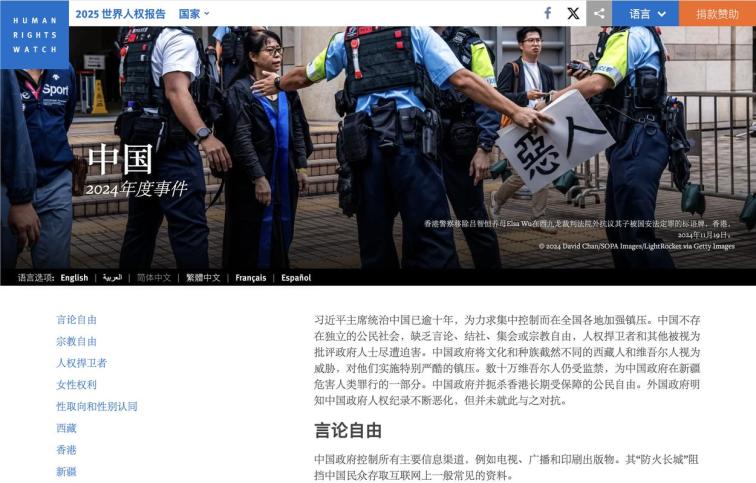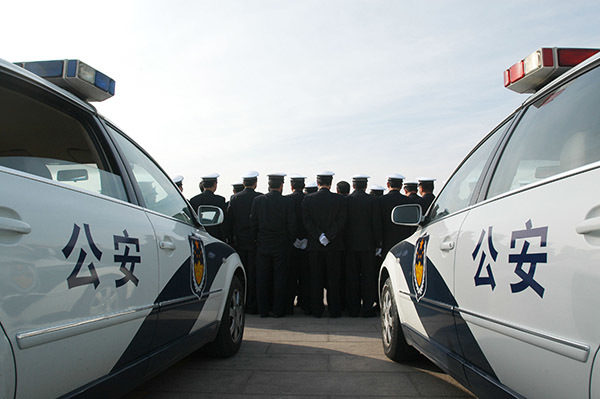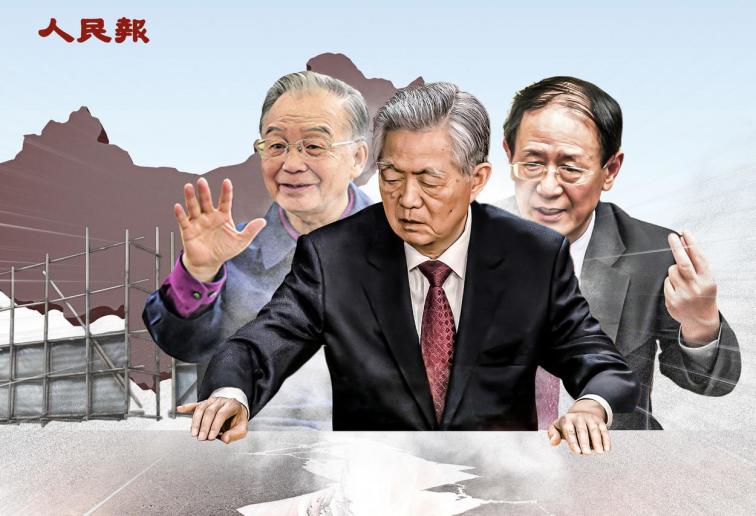Photo Caption: Chinese Communist Party leader Xi Jinping and Premier Li Keqiang (second from left) at the closing ceremony of the 20th National Congress of the Communist Party of China. Former President Hu Jintao was forcibly escorted out early. The congress concluded at the Great Hall of the People in Beijing, where Xi was expected to secure his third term. (Photo by Kevin Frayer/Getty Images)
[People News] The Chinese Communist Party's (CCP) 61889 Unit, also known as the Central Guard Regiment, is a highly secretive organisation based in Beijing. It is under the Joint Staff Department of the Central Military Commission and commanded by the Security Bureau of the General Office of the CCP Central Committee. This unit is responsible for the protection of the CCP's top leaders. According to recent revelations by the independent media outlet YouLiao, former Chinese leader Hu Jintao, after surviving an assassination attempt in the Yellow Sea, restructured the Central Guard Regiment, establishing a dual-command security system that reports solely to the Chairman of the Central Military Commission.
The Central Security Bureau, which directly oversees the Central Guard Regiment, is under the CCP’s General Office and is responsible for guarding high-ranking officials, particularly members of the Politburo Standing Committee. The Central Security Bureau comprises eight full division-level units, with the Central Guard Regiment being the most crucial and considered its core combat force. This regiment is often referred to by outsiders as the “bodyguards of Zhongnanhai.”
Though officially a regiment-level unit, the Central Guard Regiment holds a de facto deputy military-region rank due to its direct subordination to the Central Military Commission’s General Office. Its commander is ranked at the full division level. Notably, the Central Guard Regiment is not under the command of any military region, making it directly accountable to the CCP’s top offices and capable of responding quickly to critical tasks.
YouLiao revealed that the Central Guard Regiment now essentially operates under two integrated command structures.
One set is controlled by the Director of the General Office of the CCP Central Committee. The other is under the General Office of the Central Military Commission. This dual structure was designed to prevent any one side from being able to unilaterally harm the top CCP leader, currently Xi Jinping.
According to YouLiao, the management of the Central Guard Regiment is now extremely tight, with two distinct groups operating inside. How are they organised?
YouLiao explained that within the same battalion, for example, soldiers like Zhang San and Li Si might belong to different chains of command. Zhang San might have an identification number assigned by the General Office, making him subordinate to the CCP General Office. Li Si, on the other hand, might be under the Central Military Commission with a different ID. Some individuals even have two IDs — serving both command systems. When deployed on missions, if one group detects suspicious activity from the other, they are authorised to act immediately — including using lethal force. Notably, this highly secretive and advanced setup was not Xi Jinping’s doing, but rather an arrangement made by Hu Jintao.
During his term, Hu Jintao survived three assassination plots allegedly orchestrated by the Jiang Zemin–Zeng Qinghong faction. The details of these plots have long been reported in overseas media. In 2012, amid escalating CCP infighting, Chinese search engine Baidu briefly lifted the censorship on searches related to the “Hu assassination incident.”
YouLiao stated that Hu Jintao, having spent decades navigating the inner workings of the CCP, developed deep expertise in political survival. He grew in the shadows of factional struggles, which made him particularly adept at protecting himself.
Following the attempted assassination in the Yellow Sea, Hu realised the critical need to bolster his personal security. He thus established the complex dual-command system within the Central Guard Regiment.
Upon transferring power, Hu Jintao famously conducted a “naked retirement,” handing over all three core powers — party, government, and military — to Xi Jinping in one go, earning him praise for his integrity and statesmanship.
YouLiao claimed that the special unit loyal only to Hu Jintao was entirely passed down to Xi Jinping. This unit answers solely to the Chairman of the Central Military Commission — currently Xi. It operates independently with formidable combat capability. That’s why, it is said, even heavyweight figures like Zhou Yongkang, Ling Jihua, Bo Xilai, and Xu Caihou could not outmanoeuvre Hu Jintao.
On October 22, 2022, during the closing session of the CCP’s 20th National Congress, Hu Jintao — who had been seated to Xi Jinping’s left — was suddenly escorted out by staff, shocking the international community. The Financial Times later analysed the incident, suggesting Hu was removed because he interfered with Xi Jinping’s ambition to establish “one party, one leader.” This, they said, was Xi’s way of repaying the “mentor” who had handed him power.
The Yellow Sea Assassination Attempt on Hu Jintao
A rare report by a Chinese military column once detailed an incident in 2006 when then-Chairman of the Central Military Commission Hu Jintao narrowly escaped an assassination attempt while inspecting the military in the Yellow Sea, allegedly orchestrated by Zhang Dingfa.
The North Sea Fleet was Zhang Dingfa’s stronghold. Beginning in 1985, Zhang rose through the ranks from assistant to chief of staff, to deputy commander, to commander of the North Sea Fleet, and later served as deputy commander of the Jinan Military Region. In 2000, he became deputy commander of the Navy, and by June 2003, he was appointed Commander of the PLA Navy.
The article described how, in early May 2006, Hu Jintao boarded China’s most advanced missile destroyer to inspect the North Sea Fleet in the Yellow Sea. Suddenly, two naval ships opened fire simultaneously on the destroyer carrying Hu. Five sailors aboard Hu’s vessel were killed. In panic, the destroyer quickly reversed course and fled the exercise zone at full speed until it reached a secure area.
To prevent further danger, Hu transferred to a helicopter and flew directly to the Qingdao base. He didn’t return to Beijing immediately but instead flew to Yunnan. Only after a week — once all safety arrangements had been finalised — did he reappear in Beijing.
The article bluntly pointed out that Zhang Dingfa was a close ally of Jiang Zemin, and many suspected his involvement in the assassination plot.
The first reports of the Yellow Sea assassination attempt came from Hong Kong media. These reports stated that detained naval officers later confessed under interrogation that the order came directly from Jiang Zemin, and that Zhang Dingfa, Jiang’s key military ally, oversaw the operation. To ensure success, Zhang reportedly ordered a pincer-style attack with two warships and promised significant promotions to those involved.
Seven months after the attempted assassination, Zhang Dingfa died at age 63 at Beijing’s 301 Military Hospital. △










News magazine bootstrap themes!
I like this themes, fast loading and look profesional
Thank you Carlos!
You're welcome!
Please support me with give positive rating!
Yes Sure!